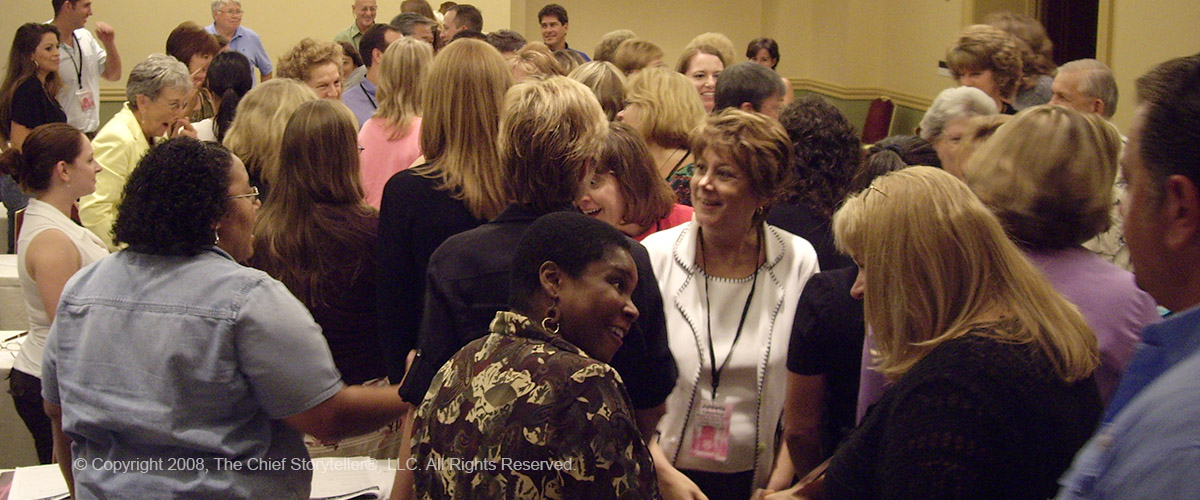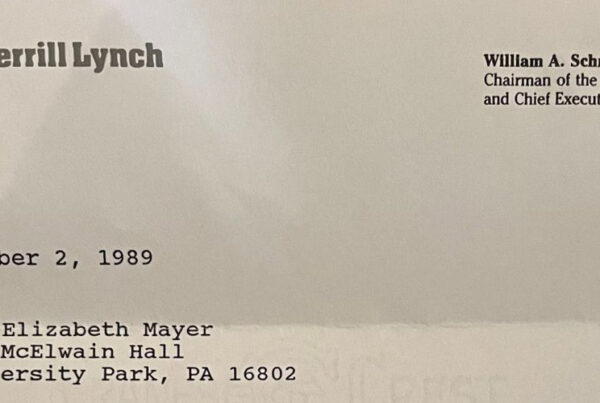
Article Summary: Prepare for networking the way you might prepare for a date. You wouldn’t go on a blind date without learning a few things about your potential suitor, right? Sure, you know his or her name. What about your date’s interests? People you know in common? Hobbies? Favorite foods? Many people complain that networking is not a good use of their time. Rather, networking is a good use of your time. Networking truly is a valuable business tool if you choose the right venues and learn how to make business relationships count with people when you have the opportunity. Here are five networking tips and suggestions to help make networking more enjoyable and rewarding.
Step Away from the Urn, and Other Networking Tips
Copyright © 2008, Washington Business Journal. Used by permission.
Ira J. Koretsky
March 28, 2008
Prepare for networking the way you might prepare for a date. You wouldn’t go on a blind date without learning a few things about your potential suitor, right? Sure, you know his or her name. What about your date’s interests? People you know in common? Hobbies? Favorite foods?
Networking is no different. It is all about building great relationships. Just as a date is a chance for a new relationship with long-term potential, each networking opportunity is a chance to forge a new business relationship.
While attending events, your priority is to get as many bona fide business dates as possible. During a typical social setting, you have the luxury of talking to people at length. During a typical business event, you should be talking to as many people as possible.
So step away from the coffee urn and make those connections, even if connection-making is not something that comes naturally to you.
Many people complain networking is not a good use of their time. Rather, it is a good use of your time. It truly is a valuable business tool if you choose the right venues and learn how to make business relationships count with people when you have the opportunity.
Here are five suggestions to help make networking more enjoyable and rewarding:
Six Degrees of Separation
Networking is all about the deliberate development of professional relationships.
You can network yourself to anyone using the “six degrees of separation” phenomenon made famous by Stanley Milgram in 1969 with “The Drawing Power of Crowds of Different Size.”
A true network is filled with direct and indirect connections, some of which are connected by many degrees of separation — much like a spider web. To weave your own business web of successful connections, research and planning are your first priority.
I suggest you make three lists.
- List all the individuals you need to meet, including names, organizations and titles.
- List all the types of people you need to meet, by title and organization.
- List people you should introduce to others in your network.
Those lists make up your target networking plan. Revise and edit it over time.
Now identify all the places that provide potential opportunities for you to meet the people on your lists. Examples include conferences, networking events, associations, social clubs and charity functions.
Maximize Your Time
How you use your networking time is almost as important as where you network.
By arriving early to an event and staying late, you can connect with the people who come before the meeting starts and those who stay afterward, as well as all those people in between.
During that time, you should be meeting a new person every five to 10 minutes. With each new encounter, be sure you are sharing a compelling answer to “what do you do?”
That answer is your “elevator speech,” which draws in people as well as potential opportunities.
Spend Time with the Right People
Attend events that best match your lists from Step 1. This gives you the best chance of meeting people who are either ideal contacts or ideal partners.
Engage them first with small talk and then with insightful questions that probe the surface. Leave the deeper questions for a face-to-face meeting.
Over time, develop a set of questions to help you learn about the contact’s personal and professional goals and requirements.
Follow Up
Follow up with your potential new business friend within 48 hours. You can do this by phone, e-mail or mail. Keep your follow-up message short. Including a link to a Web site, article or blog is a great way to ensure that your message gets returned.
Tally it Up
Evaluate your return on networking.
Didn’t meet the people you wanted to see? Think of another place where you can make it happen. Did you leave without making any meaningful connections or obtaining the five business cards you had in mind? Then go back to one of your three lists.
Your networking plan is just like a business plan in many respects. Write a specific activity goal for each week. After each event, determine whether you achieved the expected results. Revise your plan appropriately.
Every event offers the opportunity to practice your communication skills. Over time, your ability to determine the best events to attend and your ability to connect with the right contacts get better.
Athletes and musicians all practice to improve. Great networkers should too.
FURTHER READING – ALL WASHINGTON BUSINESS JOURNAL ARTICLES
- Everyone has a Story to Tell, and You Need One Too (read)
- Say What you Want, Say it in Under 30 Seconds (read)
- Step Away from the Urn, and Other Networking Tips (read) (this article)
- Keeping it Real – Learn to Heed Your Authentic Voice (read)
- Getting to Yes – Make Body Language Work for You (read)
- Drop the Dry Presentation, Tell a Compelling Story (Part 1)
- Presenters Must Prepare Like Orchestra Conductors (Part 2)
- Great Leaders Know How to Put their Words to Work (read)
Photography Source: © Copyright 2008, The Chief Storyteller®, LLC. All Rights Reserved.



